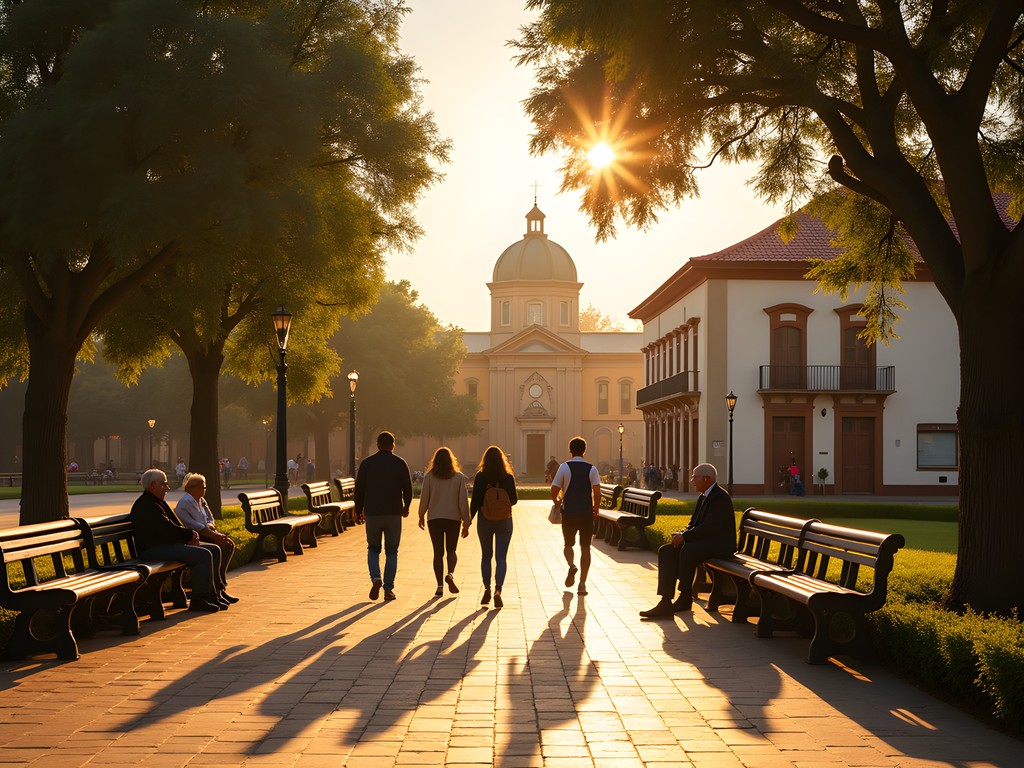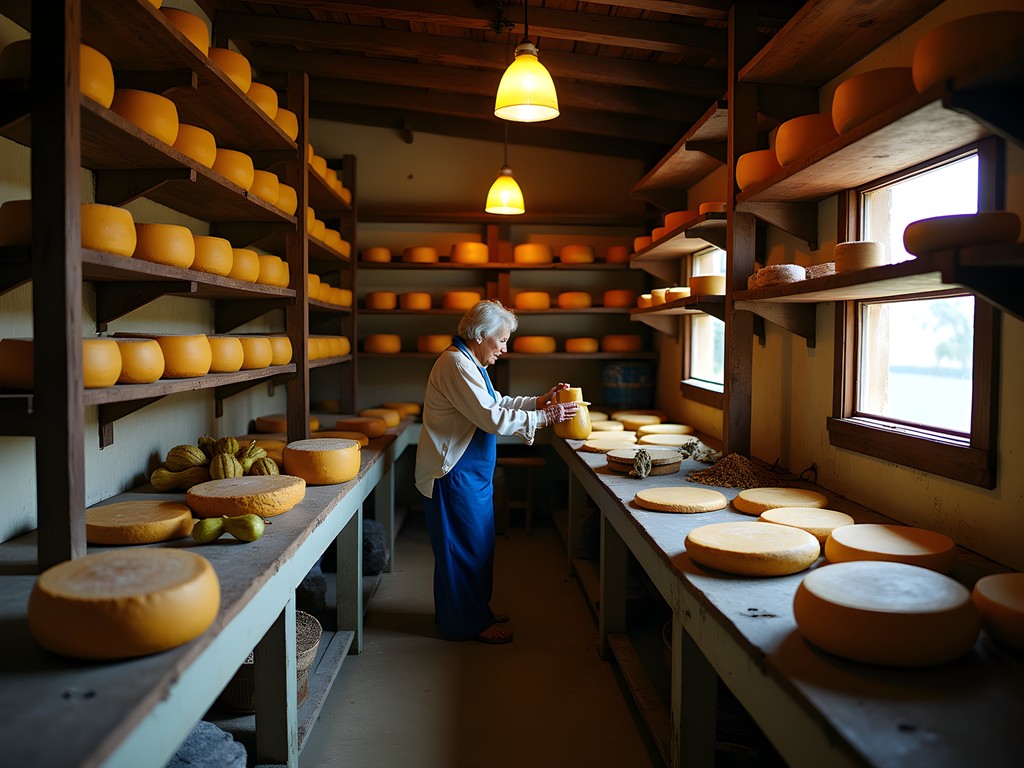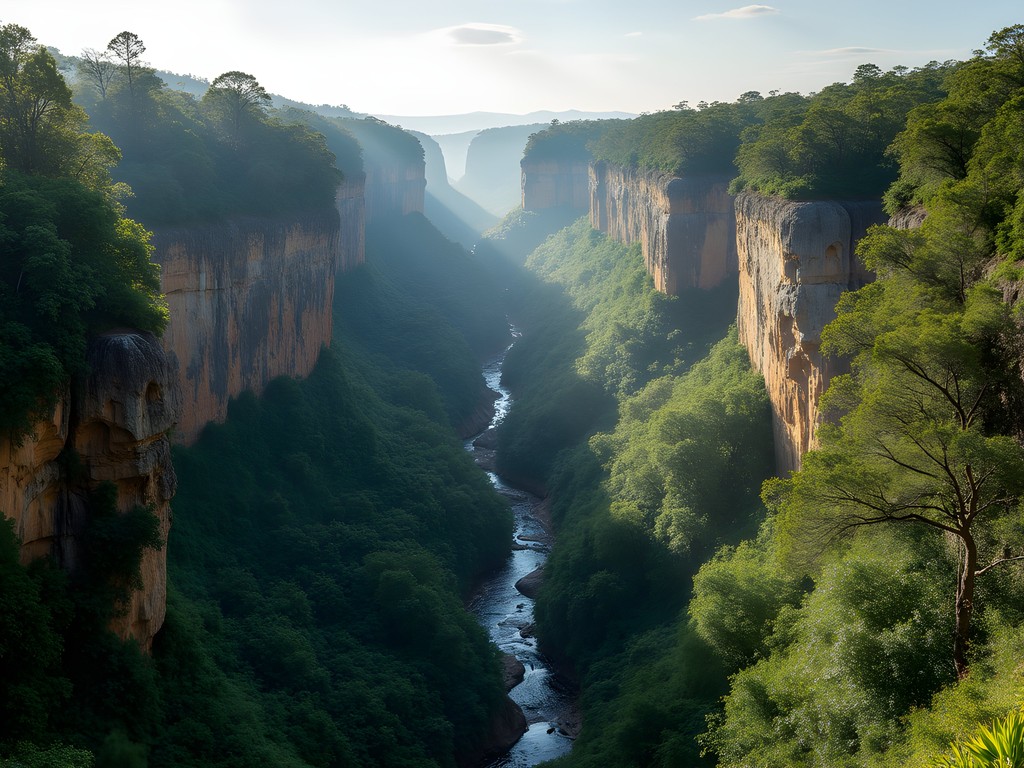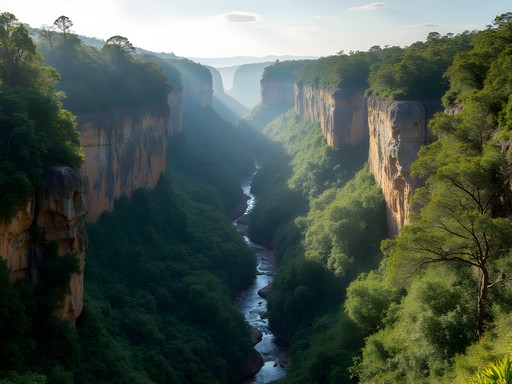Disclosure: This article contains affiliate links. We may earn a commission from purchases at no extra cost to you, which helps our travel content.
There's a particular magic to border cities that defies easy translation. Nestled in Uruguay's northeastern frontier near Brazil, Melo embodies this liminal charm—a place where languages, cultures, and traditions meld into something uniquely their own. Fronterizo is what locals call their distinctive dialect, a beautiful linguistic dance between Spanish and Portuguese that perfectly captures Melo's essence: neither fully one thing nor another, but something wonderfully in-between. As someone who has spent her life navigating cultural boundaries, these threshold places speak to me in ways that glossy tourist destinations rarely do.
Melo: Where Time Moves at Its Own Pace
Arriving in Melo feels like stepping into an alternate timeline where the frenetic energy of modern travel dissolves into something more contemplative. The city's heart beats around Plaza Constitución, where elderly men play chess with the patience of philosophers while young families stroll in the late afternoon paseo—that distinctly Latin ritual of community connection.
During my first evening, I found myself drawn to a small parrillada on Calle Treinta y Tres, where the asado master—a woman in her seventies named Dolores—has been tending the same grill for over four decades. 'La carne tiene su propio idioma,' she told me with a wink—meat speaks its own language. And indeed, her perfectly grilled entrecôte needed no translation, though I was grateful I'd brought my pocket phrasebook to navigate the nuanced menu.
Melo's rhythm reveals itself gradually to those willing to slow down. Unlike Montevideo or Punta del Este, here you won't find lines of tourists or carefully curated 'authentic experiences.' Instead, authenticity simply exists, unperformed and genuine.

💡 Pro Tips
- Learn a few basic Spanish phrases - while many in Melo understand Portuguese due to the Brazilian border, Spanish remains the primary language
- Visit Plaza Constitución in the early evening (around 6-8pm) to experience the local paseo tradition
- Ask locals for restaurant recommendations rather than relying solely on online reviews
The Fermentation Traditions of Uruguay's Interior
My passion for fermentation practices has taken me across continents, but Uruguay's interior regions hold techniques that remain refreshingly undocumented in English-language food literature. In Melo, I was fortunate to spend a morning with Señora Elisa, whose family has produced artisanal cheeses for five generations.
In her modest home workshop, wooden shelves lined with aging queso colonia filled the air with complex aromas that told stories of grass-fed cattle and the specific microbiome of this region. Elisa demonstrated how she maintains her century-old madre (mother culture)—a process remarkably similar to techniques I've documented in rural Korea, though with distinctly Uruguayan adaptations.
What fascinated me most was her queso de porongo, a specialty cheese fermented in dried gourds that impart subtle flavors impossible to replicate in industrial production. I carefully recorded her techniques in my waterproof notebook, which has proven invaluable during my fermentation research trips where kitchen environments can be unpredictable.
'El queso es paciencia materializada,' Elisa explained—cheese is patience made material. This philosophy extends beyond food to Melo itself, a place that reveals its treasures only to those willing to wait.

💡 Pro Tips
- Visit the Sunday farmers market near Parque Zorrilla for local cheeses and fermented goods
- Bring small denominations of Uruguayan pesos as many small producers don't accept cards
- Ask about 'queso de porongo' specifically - it's rarely offered to tourists but represents an important local tradition
Beyond the City: Quebrada de los Cuervos
While Melo itself offers plenty to explore, the surrounding countryside reveals Uruguay at its most pristine. Just 45 kilometers from the city lies Quebrada de los Cuervos (Ravens' Ravine), Uruguay's first designated protected area and a landscape that defies the country's reputation for endless plains.
Hiring a local guide is essential here—not just for navigation but for the cultural context they provide. My guide, Fernando, pointed out medicinal plants his grandmother taught him to identify and shared folklore about the ravine that no guidebook mentions. His knowledge transformed what might have been a simple nature walk into a profound connection with the land.
The ravine's microclimate supports unique flora found nowhere else in Uruguay, and bird enthusiasts will find paradise here with over 100 species documented. I'm no professional photographer, but my compact binoculars allowed me to spot the elusive chorlo cabezón (rufous-chested plover) that Fernando was particularly excited to point out.
The hiking trails vary in difficulty, but even the moderate routes offer spectacular views of the 100-meter-deep canyon. Pack a picnic lunch from Melo's morning market and plan to spend at least half a day exploring this natural wonder that remains curiously absent from most international tourism itineraries.

💡 Pro Tips
- Arrange a guide through your accommodation in Melo rather than trying to explore independently
- Visit early morning for the best bird watching opportunities and cooler hiking temperatures
- Wear proper hiking shoes as trails can be slippery, especially after rain
The Linguistic Borderlands: Portuñol Culture
As a translator, I'm perpetually fascinated by linguistic borderlands, and Melo offers one of the most interesting examples I've encountered. Here, the official language is Spanish, but step into any local café and you'll hear portuñol fronterizo—a fluid hybrid of Portuguese and Spanish that's more than simple code-switching. It's a distinct dialect with its own grammar, vocabulary, and cultural expressions.
At Café Frontera on Calle Aparicio Saravia, I spent delightful afternoons documenting linguistic patterns while sipping mate prepared in the distinctive Uruguayan style (different from Argentine or Paraguayan traditions). The café owner, Sebastián, became an enthusiastic linguistic informant, explaining how certain expressions can only exist in portuñol because they embody concepts unique to border identity.
For visitors interested in this linguistic phenomenon, I recommend bringing a digital voice recorder (with permission, of course) to capture conversations you can revisit later. My daughter has been transcribing some of these recordings for her school language project in Seoul, fascinated by how languages blend and evolve.
Melo's position as a cultural crossroads extends beyond language to music, cuisine, and celebrations. During my visit, I was fortunate to experience a local murga performance that incorporated Brazilian carnival elements with traditional Uruguayan musical structures—a perfect metaphor for the city itself.

💡 Pro Tips
- Visit Café Frontera in the afternoon when locals gather for mate and conversation
- Ask permission before recording conversations or taking photos of people
- Learn a few portuñol phrases like 'Baita dia lindo' (beautiful day) to delight locals
Where to Stay: Melo's Hidden Accommodations
Melo isn't overflowing with international hotel chains, and that's precisely its charm. Instead, you'll find family-run establishments where the concept of hospitality transcends transactional tourism.
My home during my stay was Posada del Río, a converted colonial house run by the delightful Méndez family. With just six rooms arranged around a central courtyard filled with flowering plants and singing birds, it offers an intimate glimpse into traditional Uruguayan domestic architecture. My room featured original tile floors, twelve-foot ceilings, and antique furniture that told stories of the region's history.
What distinguished Posada del Río wasn't luxury amenities but genuine connection. Each morning, Señora Méndez prepared breakfast featuring homemade dulce de leche and bread from the bakery three doors down. These meals inevitably turned into impromptu Spanish lessons, cultural exchanges, and travel advice that proved far more valuable than anything I could have researched online.
For those seeking slightly more modern accommodations, Hotel Juana offers renovated rooms with excellent memory foam pillows that saved my neck after long days of exploration. Their rooftop terrace provides a perfect perch for watching Melo's spectacular sunsets with a glass of local Tannat wine in hand.
Whichever accommodation you choose, the key is embracing Melo's unhurried approach to hospitality—one where conversations matter more than checkout times.

💡 Pro Tips
- Book accommodations directly by phone rather than through international booking sites for better rates and room selection
- Request a room facing the interior courtyard at Posada del Río for a quieter stay
- Ask your hosts about local events happening during your stay - they often know about gatherings not advertised to tourists
Final Thoughts
As my weekend in Melo drew to a close, I found myself lingering over a final mate at Plaza Constitución, watching local families enjoy their Sunday rituals. A group of children played cricket nearby—a sight that immediately made me think of my daughter back in Seoul and her own passion for the sport. These unexpected connections across continents remind me why I travel: not to check destinations off a list, but to discover the threads that connect our human experiences across seemingly disparate cultures.
Melo won't appear on most travelers' Uruguay itineraries, overshadowed by Montevideo's cosmopolitan energy and Punta del Este's beaches. Yet in this frontier city, I found something increasingly rare in our hyperconnected world—a place still writing its own story, unconcerned with how it translates to outsiders. Perhaps that's the greatest gift Melo offers: the chance to step outside the carefully curated tourist narrative and into something more complex, contradictory, and ultimately more rewarding.
As a translator, I've learned that the most interesting aspects of a culture often lie in what resists easy translation. Melo, with its portuñol dialect, its unhurried rhythms, and its position at the crossroads of influences, embodies this beautiful resistance. For travelers willing to venture beyond the familiar, Uruguay's frontier city offers rich rewards that no guidebook could adequately capture. Vale la pena—it's worth the effort.
✨ Key Takeaways
- Melo offers an authentic glimpse into Uruguayan culture away from tourist centers
- The unique portuñol dialect and border culture create a fascinating linguistic landscape
- Local fermentation traditions and food practices reveal deep cultural connections
- Quebrada de los Cuervos provides natural beauty that contradicts Uruguay's reputation for flatlands
- The slow pace and genuine hospitality provide a refreshing alternative to conventional tourism
📋 Practical Information
Best Time to Visit
Spring (October-November) or Fall (March-April)
Budget Estimate
$70-120 USD per day including accommodations, meals and activities
Recommended Duration
2-3 days
Difficulty Level
Moderate
















Comments
bluetime
How safe is it for solo female travelers? Thinking about visiting in January but a bit nervous about the remote location.
Brooklyn Washington
I found it very safe as a solo traveler. The pace is slow, people are helpful, and it doesn't have the safety concerns of larger cities. Just use normal precautions. I'd recommend staying at Posada del Río - family-run place where the owners really look out for their guests. They helped me arrange local transportation to Quebrada de los Cuervos too.
moonlife
I second what Brooklyn said! I traveled solo there last month and felt completely comfortable. Brought my Pacsafe crossbody as I do everywhere, but honestly barely thought about safety. The locals were incredibly welcoming.
bluetime
Thanks both! That's really reassuring. Will check out that posada!
moonlife
OMG I'm literally reading this from a café in Melo right now!!! Your post convinced me to stop here on my way to Brazil instead of just passing through. The Quebrada de los Cuervos was STUNNING - totally worth the detour. And you weren't kidding about the mate culture here! Everyone's walking around with their thermoses and gourds. I bought a traditional mate set from a local artisan and the seller spent 30 minutes explaining the proper preparation ritual. This is what travel is all about! 😍
skylife
That's awesome timing! Did you try the tortas fritas yet? Best when it's raining!
moonlife
YES! Had them yesterday during that afternoon shower. So simple but so good with a bit of dulce de leche!
Taylor Moreau
I visited the Uruguay-Brazil border region last year for a business conference and was captivated by the cultural blend. The Portuñol linguistic phenomenon you mentioned is fascinating - I found myself constantly trying to determine if people were speaking Portuguese or Spanish! The food scene in Melo deserves more attention too. Those chivito sandwiches at Café Frontera were incredible. Did you happen to visit the Sunday market near the bus terminal? It's where I picked up some beautiful handcrafted leather goods that I still use for my travel accessories. Your piece captures the unhurried pace perfectly - something I found refreshing after the hustle of Montevideo.
Brooklyn Washington
Thanks Taylor! I did make it to that Sunday market - amazing handicrafts. And yes, Café Frontera's chivitos are legendary. The owner told me they've been using the same family recipe for three generations!
explorebuddy
Is it easy to get to Melo from Montevideo? Planning a Uruguay trip next year and this sounds worth adding!
Brooklyn Washington
There are daily buses from Montevideo's Tres Cruces terminal - about 5-6 hours. Comfortable ride, but bring snacks! The landscape changes dramatically as you head northeast.
explorebuddy
Thanks Brooklyn! 5-6 hours isn't bad at all. Definitely adding this to my itinerary.
skylife
Finally someone writing about Melo! Such an underrated place that deserves more attention.
Jose McDonald
Brooklyn! You're making me want to book a flight RIGHT NOW! 🔥 I've been all over Uruguay but somehow missed Melo completely. That border culture sounds AMAZING - I'm obsessed with these in-between places where languages and cultures mix. Did you record any of the local music? I always travel with my portable recorder to capture those authentic local sounds. Thinking about doing a whole Uruguay road trip next year and will definitely hit you up for more tips on the northeast region!
roamlife
Just got back from Uruguay and made it to Melo after reading this post. That fermentation workshop you mentioned happens every Saturday now! The lady who runs it (Soledad) was amazing. Also, stay at Posada del Río - family-run place with the best homemade breakfast.
springexplorer
How did you get around in the region? Is it possible without renting a car?
Brooklyn Washington
Yes! I used local buses for most trips. To reach Quebrada de los Cuervos, I joined a small tour from Melo (arranged through my hostel). The buses between towns are reliable but infrequent, so grab a printed schedule when you arrive.
springexplorer
Perfect, thanks for the info! I'm not comfortable driving in foreign countries so this is great news.
islandnomad
I stumbled across Melo two years ago when my bus broke down on the way to Brazil! Ended up staying three days and it was such a happy accident. That fermentation tradition you mentioned is real - I still think about that homemade cheese I had at a local's house. Did you try the regional pastries? There was this one with dulce de leche that I dream about. Your post brought back so many good memories!
sunsetzone
Those are always the best travel experiences - the unplanned ones!
sunsetzone
Love these hidden gem posts! Never even heard of Melo before.
Venture X
Premium card with 2X miles, $300 travel credit, Priority Pass